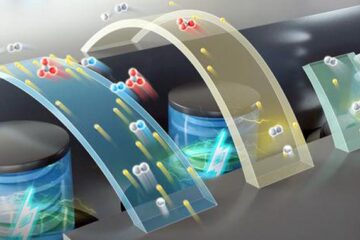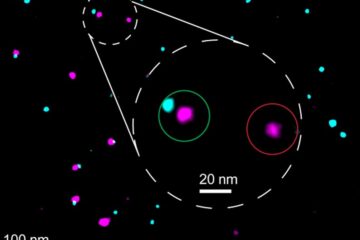New research to run cars on flower power

Will the oilfields of the future be full of sunflowers? They could be if Leeds fuel and energy researchers succeed in producing hydrogen from sunflower oil.
Hydrogen is seen as the fuel of the future – able to create electricity with no harmful emissions – to power everything from cars, portable generators to flashlights and even homes and factories.
But where is the hydrogen to come from, and can we mass-produce it without creating more pollution problems? Researchers Valerie Dupont (pictured above), Jenny Jones, Edward Hampartsoumian and Andy Ross are testing a novel system using only sunflower oil, air, water vapour and two special catalysts.
“Most methods of producing hydrogen burn another fuel for energy, which itself creates pollution – carbon monoxide, nitrogen oxides and other emissions,” said Dr Dupont. “Our catalyst uses oxygen from the air to heat up naturally, and this heat is used to reform the oil with steam to create hydrogen. The excess carbon dioxide is taken into the second catalyst, then released for storage or use in other chemical processes, ensuring that damaging levels of CO2 aren’t just put back into the atmosphere.”
The researchers are working with industrial partners to identify the best catalysts, and then optimising their system for sunflower oil. But the process could be applied to other lower grade forms of renewable fuel as well, and even be used with oils made from waste.
“Waste pyrolysis oil is currently burned as fuel, but this can be quite polluting,” said Dr Dupont. “Our system would still make use of its energy potential, while allowing the often noxious chemicals in the oil to be more easily controlled.”
The research is funded by the EPSRC for three years.
Media Contact
More Information:
http://reporter.leeds.ac.uk/483/s3.htmAll latest news from the category: Ecology, The Environment and Conservation
This complex theme deals primarily with interactions between organisms and the environmental factors that impact them, but to a greater extent between individual inanimate environmental factors.
innovations-report offers informative reports and articles on topics such as climate protection, landscape conservation, ecological systems, wildlife and nature parks and ecosystem efficiency and balance.
Newest articles

High-energy-density aqueous battery based on halogen multi-electron transfer
Traditional non-aqueous lithium-ion batteries have a high energy density, but their safety is compromised due to the flammable organic electrolytes they utilize. Aqueous batteries use water as the solvent for…

First-ever combined heart pump and pig kidney transplant
…gives new hope to patient with terminal illness. Surgeons at NYU Langone Health performed the first-ever combined mechanical heart pump and gene-edited pig kidney transplant surgery in a 54-year-old woman…

Biophysics: Testing how well biomarkers work
LMU researchers have developed a method to determine how reliably target proteins can be labeled using super-resolution fluorescence microscopy. Modern microscopy techniques make it possible to examine the inner workings…





















